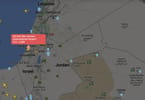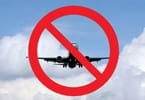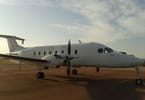SRI LANKA (eTN) – There is no doubt that tourism in post-war Sri Lanka has grown at an unprecedented and record-breaking manner, reaching a dizzy 40% YOY growth in arrivals in 2010. After decades of stagnation and struggling for survival, there is no doubt that Sri Lanka’s tourism future prospects are today excellent.
Such strong growth has been recorded before, especially from countries emerging out of several years of war and strife, indicating pent-up demand from consumers. Cambodia, for example, showed a robust YOY growth of almost 25% after its conflict came to an end, and as the country slowly opened up its economy towards the end of the last decade.
In spite of the arrival numbers showing healthy growth in Sri Lanka, there has always been a controversy that the corresponding occupancy in hotels does not really reflect these high arrival numbers. To analyze this issue, one has to first consider how a “tourist” is defined according to international norms. According to the UN World Tourism Organization (UNWTO), tourists are people who “travel to and stay in places outside their usual environment for more than 24 hours and not more than one consecutive year for leisure, business, and other purposes not related to the exercise of an activity remunerated from within the place visited.”
Sri Lanka also, quite correctly, follows this principle. However, there is a certain element of error in using this definition due to two segments of visitors who fall into the category of a tourist by virtue of the above definition but do not really contribute to the mainstream earnings.
The first is the transit passenger who stays for a short time in the country while awaiting his onward connection. Normally, such transit times are less than 8 hours, but there is a somewhat unusual situation, particular to Sri Lanka, related to such transit passengers. Given the connectivity of Colombo airport, it is a well-known fact that it is sometimes cheaper and more convenient for south Indian passengers to use Colombo as a gateway to Europe. Very often such connections out of Colombo may be as much 36 hours, but to a south Indian traveler, it is still a good deal, to “transit” in Colombo and have a comfortable short break in a good 3- to 4-star hotel in the Negombo region, before the long-haul flight to
Europe. In fact, this is an important segment for many hotels in the region, and some hotels even boast of “repeat transit” passengers who insist on transiting in a hotel they have stayed at before!
Hence, while the importance of this segment to the hotels in and around the airport region cannot be diluted, such transit passengers do still get counted as “tourists” if they stay over for more than 24 hours, although in the correct sense of the word they are not “real tourists.”
The second segment of importance is the considerable numbers of emigrant ex-citizens of Sri Lanka who visit the country on holiday. Sri Lanka has a large population of diaspora who have been regularly visiting the country over the years. These visitors, usually identified in tourism as a segment called “Visiting Friends and Relatives” (VFR), although counted as
proper tourists, most often stay with relatives and friends and do not really contribute directly to hotel occupancy levels.
For example, in 2010, Sri Lanka recorded 654,476 tourist arrivals with an average stay of 10 days per tourist, while the graded hotels in the country recorded 4,126,544 foreign guest nights (FGN) and the supplementary establishments (guest houses) 1,249,146 FGN (Ref: Sri Lanka Tourism Annual Report 2010). Thus, the total FGN recorded in 2010 is 5,375,680. Simple arithmetic of dividing the guest nights by the average stay per person yields a number of 537,569. This is then the approximate number of foreign tourists who have actually stayed in the country in graded hotels and rest houses in 2010.
On this basis, it appears that only some 82% of the total arrivals actually stay in hotels and rest houses, which is quite an eye opener.
Most tourism professionals are well aware of this fact and know that a certain allowance and “error margin” will always be inherent in the tourist arrival numbers. However, in the case of Sri Lanka, there has been a dramatic change in this relatively “constant error margin” during
the past few years, due to the cessation of the hostilities and the return to normalcy in the country. During the years of turmoil, there was a steady influx of VFRs, which did not vary over the years. However, the situation has dramatically changed now with many Sri Lankans living abroad who had not visited the country for decades, now flocking back to their homeland on holiday. Hence, this sudden increase of the VFR segment could well have a
higher than normal impact on the arrival figures, giving rise to a “higher error margin” of “real tourists.”
Thus is borne out from the following analysis (based on the figures published in the past Sri Lanka Tourism annual reports). There is also an upside to this. According to the 2010 statistics, Sri Lanka earned
US$575.9 million in foreign exchange from tourism, which then yields a per capita spend per night of US$88 from 654,476 visitors. However, if this number is adjusted to reflect the “real” tourists, as evaluated in the foregoing analysis, then the US$575.9 million will be generated
by 537,569 visitors and not 654,476. This would then increase the per capita spend per night to US$107. It is interesting to compare this figure with other Asian countries of the region.
Hence it could be concluded from the foregoing analysis that:
– There has always been an error margin between the overall tourist arrival
figures recorded and the actual number of foreign tourists staying in hotels, due to the steady influx of ex-Sri Lankan citizens, now holding foreign passports and returning home for holidays.
– This “error margin” seems to have increased of late, primarily due to the fact that a larger number of such externally-domiciled Sri Lankans are now
returning back on holiday.
This clearly indicates that Sri Lanka should not be complacent in its new-found tourism boom. It further emphasizes the unanimous appeal from all private sector tourism bodies for greater advertising and branding of the destination, contrary to the government strategy of “develop first, market later.” Any respectable marketer will confirm that in a fiercely
competitive environment (such as the Asian tourism market), the concepts of “top of the mind recall” and “out of sight, out of mind” is very vital, relevant, and important.
WHAT TO TAKE AWAY FROM THIS ARTICLE:
- However, there is a certain element of error in using this definition due to two segments of visitors who fall into the category of a tourist by virtue of the above definition but do not really contribute to the mainstream earnings.
- According to the UN World Tourism Organization (UNWTO), tourists are people who “travel to and stay in places outside their usual environment for more than 24 hours and not more than one consecutive year for leisure, business, and other purposes not related to the exercise of an activity remunerated from within the place visited.
- Given the connectivity of Colombo airport, it is a well-known fact that it is sometimes cheaper and more convenient for south Indian passengers to use Colombo as a gateway to Europe.






















